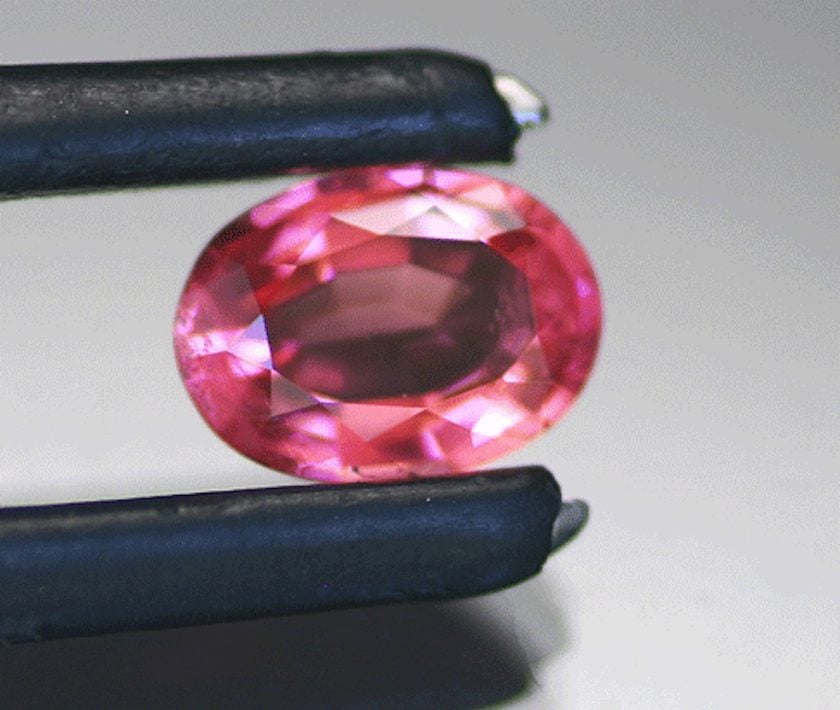Väyrynenite Value, Price, and Jewelry Information
Väyrynenite is a very rare mineral. Crystals as well as faceted gemstones in reddish, pinkish, and orange colors are prized collector’s items.
1 Minute Read
Väyrynenite is a very rare mineral. Crystals as well as faceted gemstones in reddish, pinkish, and orange colors are prized collector’s items.
Start an IGS Membership today
for full access to our price guide (updated monthly).Väyrynenite Value
Is Väyrynenite Rare?
First described as a unique mineral in 1954, väyrynenite (pronounced vuh-REN-i-nite or var-e-YEN-i-nite) occurs in very few locations. For a time, only Pakistan was known to produce gem-quality material. However, in 2006, reports emerged of gem-quality väyrynenites from Afghanistan.
Even with this recent discovery, väyrynenites remain exceedingly rare. Faceted gemstones are tiny, usually under 0.5 carats, and very seldom seen.
Does Väyrynenite Make a Good Jewelry Stone?
You're more likely to find väyrynenites, if at all, in mineral collections than jewelry collections. With a hardness of 5 and distinct cleavage, any väyrynenite jewelry would require protective settings for protection from scratches and blows.
Reserve this rare gem for occasional wear or for earrings, brooches, or other pieces less subject to impacts.
Are There "Padparadscha Väyrynenites?"
Väyrynenites can show various shades of red, pink, and orange. Consumers may find some faceted väyrynenites for sale described as having padparadscha color, a Sinhalese word meaning "lotus colored." More often associated with padparadscha sapphires, the term is difficult to define. It may refer to colors ranging from a light to medium orange-pink hue to a more saturated orangey pink. See the IGS survey on ruby and sapphire colors for more information.
Of course, this term refers to color only. Väyrynenites and sapphires are distinct gem species with very different properties. (Perhaps some vendors use the term padparadscha to describe väyrynenites in hopes of transferring the allure of a color associated with sapphires to a very rare and little-known gem).
Are There Synthetic Väyrynenites?
There are no known lab-created väyrynenites or gemstone treatments for this gemstone.
Where is Väyrynenite Found?
Afghanistan and the Skardu and Chitral districts in Pakistan have produced gem-quality crystals.
Viitaniemi, Finland is the type locality for this mineral.
Other sources of crystals include the following locations:
- Kazakhstan; Portugal; Spain; Sweden.
How to Care for Väyrynenites
Faceted väyrynenites may contain inclusions, such as single and two-phase inclusions filled with liquids, gases, or both. Therefore, don't use ultrasonic or other mechanical cleaning systems. Instead, clean them only with a soft brush, mild detergent, and warm water.
Consult our gemstone jewelry cleaning guide for more care recommendations.
Joel E. Arem, Ph.D., FGA
Dr. Joel E. Arem has more than 60 years of experience in the world of gems and minerals. After obtaining his Ph.D. in Mineralogy from Harvard University, he has published numerous books that are still among the most widely used references and guidebooks on crystals, gems and minerals in the world.
Co-founder and President of numerous organizations, Dr. Arem has enjoyed a lifelong career in mineralogy and gemology. He has been a Smithsonian scientist and Curator, a consultant to many well-known companies and institutions, and a prolific author and speaker. Although his main activities have been as a gem cutter and dealer, his focus has always been education. joelarem.com
International Gem Society
Related Articles
Black Diamond Value, Price, and Jewelry Information
Chameleon Diamond Value, Price, and Jewelry Information
Gray Diamond Value, Price, and Jewelry Information
Green Diamond Value, Price, and Jewelry Information
Latest Articles
Opal Buying Guide
Amethyst Sources Around the World: The Geological Story Behind These Purple Gemstones
Brazilianite Value, Price, and Jewelry Information
Ruby-Glass Composites vs Leaded Glass Clarity Enhancements
Never Stop Learning
When you join the IGS community, you get trusted diamond & gemstone information when you need it.
Get Gemology Insights
Get started with the International Gem Society’s free guide to gemstone identification. Join our weekly newsletter & get a free copy of the Gem ID Checklist!
